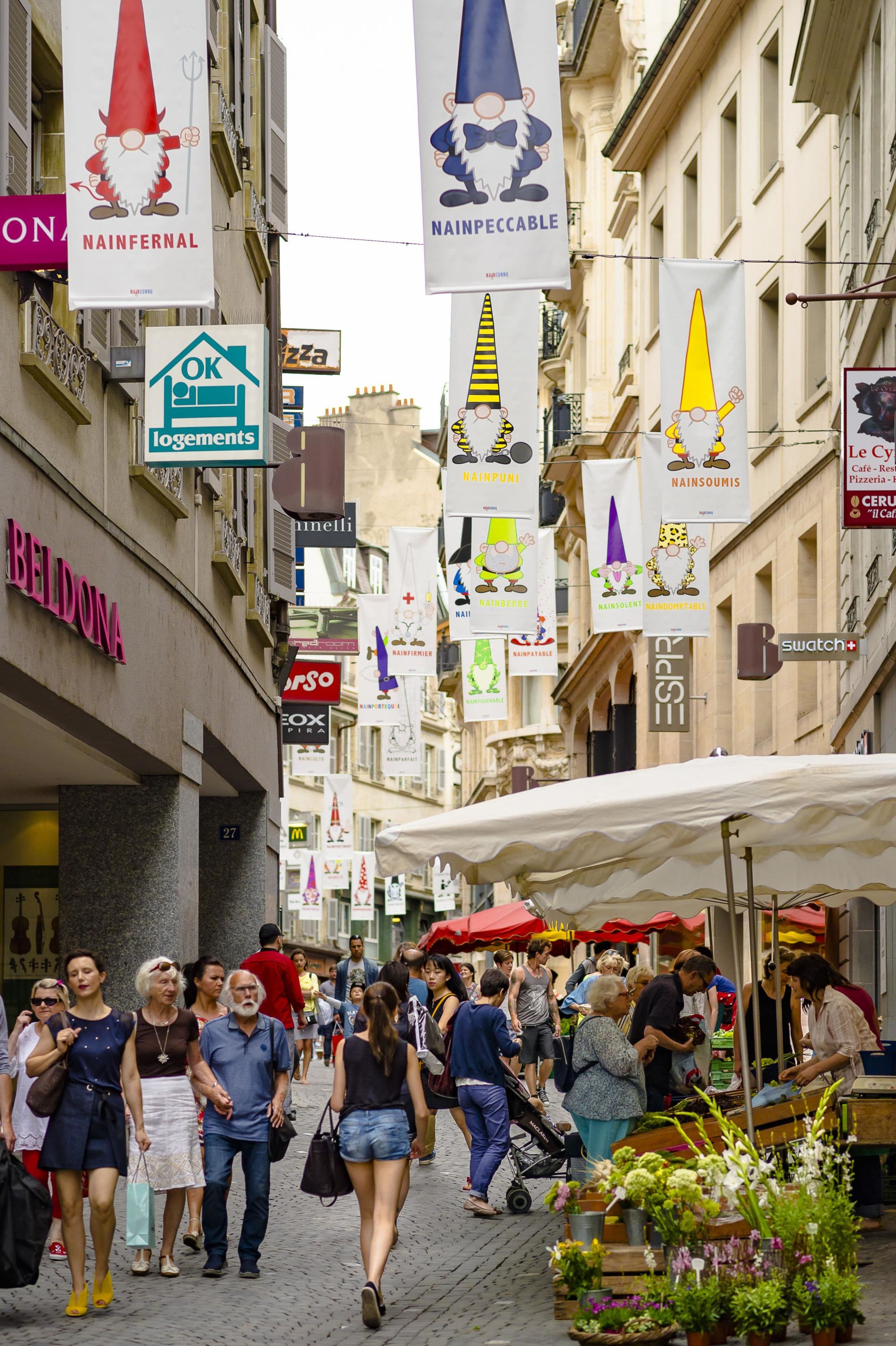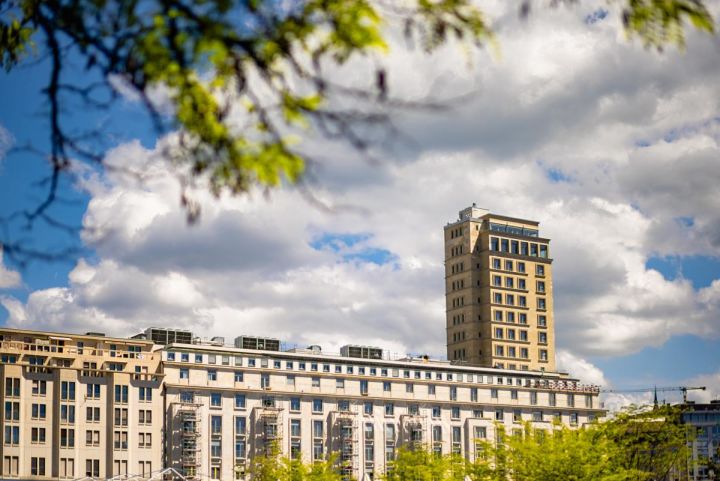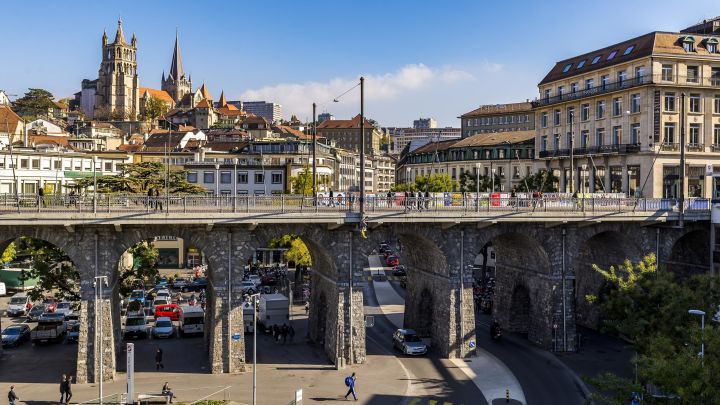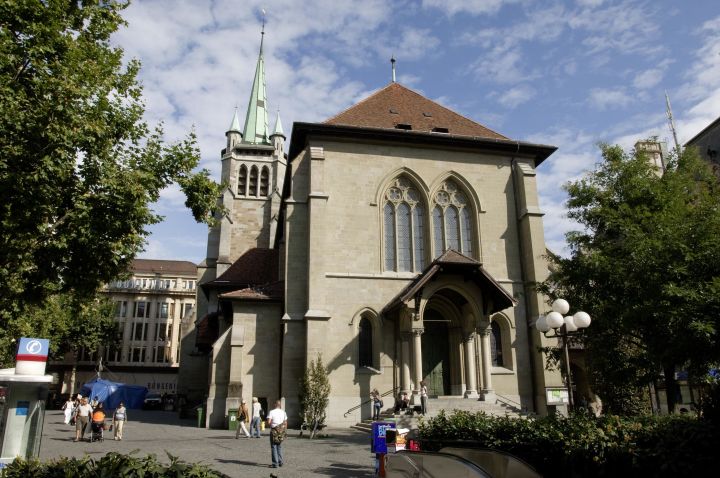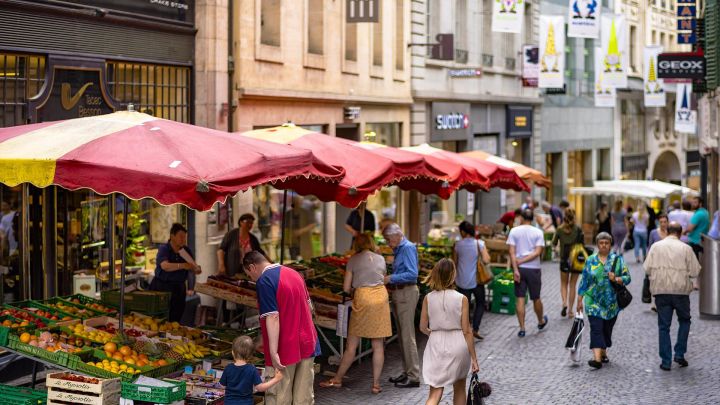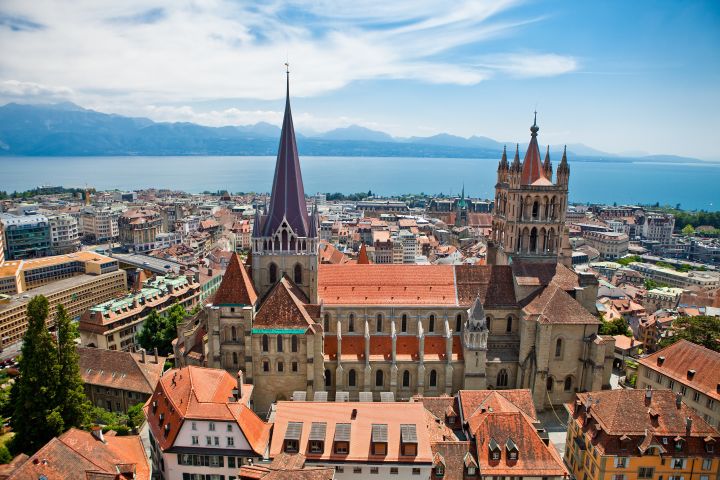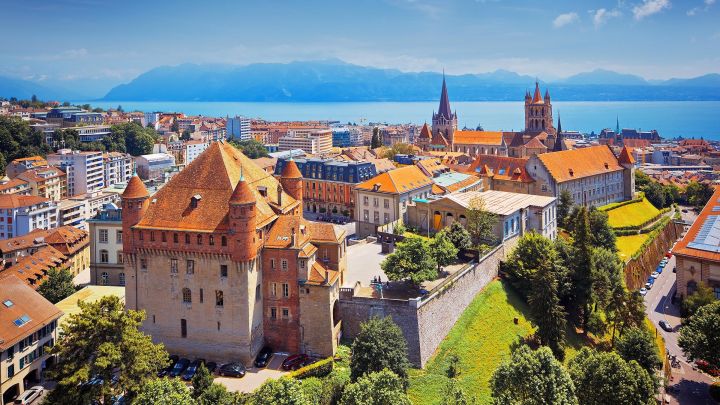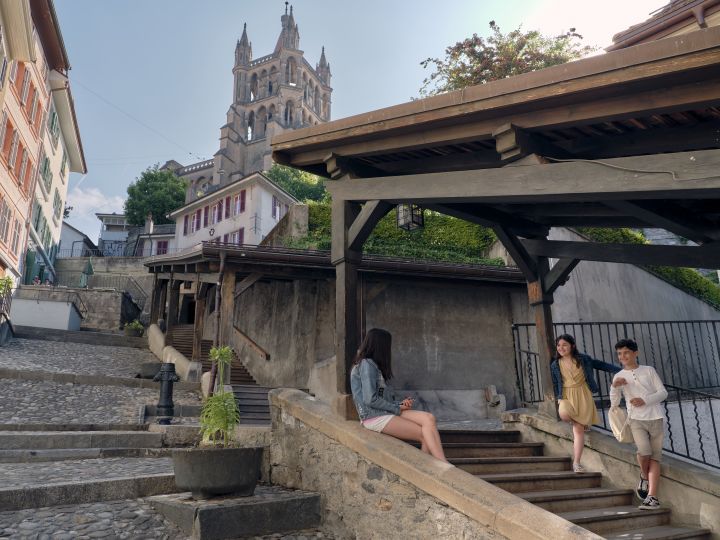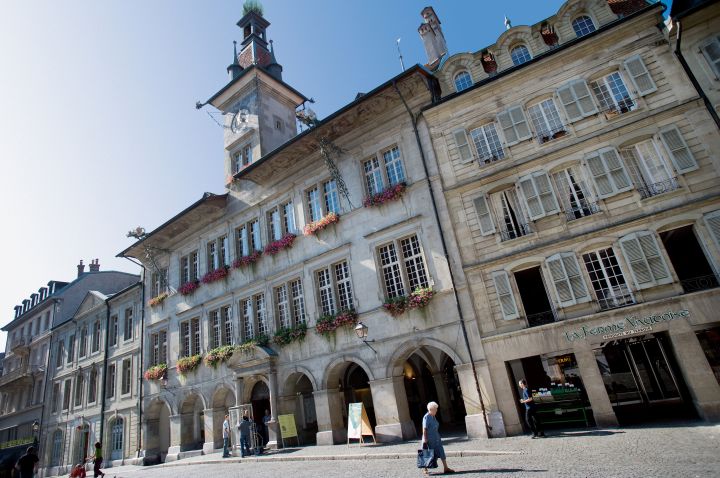To get to the start of the walk:
Take the metro m2 at the station towards "Epalinges-Croisettes" and alight at the "Lausanne-Flon" stop. Stepping from the metro, turn right, go out of the station, and continue to the first pedestrian crossing. Take the elevator to reach a footbridge.
Take the metro m2 at the station towards "Epalinges-Croisettes" and alight at the "Lausanne-Flon" stop. Stepping from the metro, turn right, go out of the station, and continue to the first pedestrian crossing. Take the elevator to reach a footbridge.
-
Built in 1932 by Alphonse Laverrière, Bel-Air Tower was based on the American model (with a metal framework covered in stone). Standing at a height of 55 metres, this was one of Switzerland’s first “skyscrapers”.
-
the Grand-Pont is the nerve centre of Lausanne. Located literally in the heart of the city, it offers remarkable views, particularly of the Cathedral. The original lower arches of this bridge dating from 1844 were buried when the Flon was covered over. This pillar - type fountain is an example of those installed around 1900 to replace the older water troughs.
-
This central town square is surrounded by impressive buildings which today house banks, post office and shops.
-
Until the beginning of the 19th century, the Rue de Bourg, which is a pedestrian zone today, was one of the main thorough fares of old Lausanne. In those days the town only extended over three hills, those of Cité, Saint-Laurent and Bourg.
-
At the heart of the old town, the majestic Lausanne Cathedral overlooks the city. Seen as one of the most beautiful gothic art monuments in Europe, it attracts more than 400,000 visitors every year.
-
This is a quarter full of typical small bistros and craft shops. To the north of the Cité hill, at Place du Tunnel, avenue César-Roux avenue and Place de l’Ours, shops and quirky bistros cry out to be discovered. It is around the Cité hill, sculpted by the Flon and Louve rivers, that the mediaeval town grew. Its cobble-stoned pedestrian streets as well as its monuments, the Cathedral of Lausanne, the St-Maire Castle and the Old academy, bear witness to that.
-
Examine the foot of the building on Rue Cité-Devant just behind the old fountain, and you’ll be able to see fossils of molluscs dating back many millions of years. The fossilised sandstone was extracted north of the Vaud Canton and testifies to the presence far back in time of the vast seas which once covered the whole of the region.
-
The Escaliers du Marché staircase, a direct and steep route that runs between Place de la Palud and the Cathedral, is one of the most picturesque sites in Lausanne. Its existence was first recorded back in the 13th century and its present-day appearance – a winding wooden stairway with a cover and a very steep cobbled street running alongside it – dates back to the years 1717 - 1719.
-
With its belfry towering over the picturesque Place de la Palud, the imposing Town Hall building is still used today for municipal offices. The Lausanne architect Abraham de Crousaz built it between 1673 and 1675 on the site of previous town halls.




